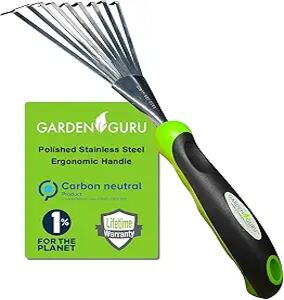Innovative Gardening Concepts to Make Best Use Of Small Areas and Returns
Innovative Gardening Concepts to Make Best Use Of Small Areas and Returns
Blog Article
The Comprehensive Guide to Gardening: Discover the Benefits of Different Designs and Methods
Horticulture includes a varied variety of designs and strategies, each offering distinct benefits tailored to individual preferences and environmental contexts. From the structured elegance of formal yards to the natural beauty of permaculture, understanding these variations is vital for cultivating an area that not only thrives but likewise shows personal values and aesthetics. Sustainable techniques play a critical duty in improving local communities and ensuring lasting success. As we discover these different styles, it becomes noticeable that the options made can substantially influence both the yard's health and wellness and its contribution to the surrounding environment.
Comprehending Gardening Fundamentals
Comprehending the essentials of gardening is important for cultivating a flourishing and sustainable garden. An effective horticulture undertaking starts with a strong foundation of knowledge relating to dirt, plant selection, and climate considerations.
Picking the right plants is just as important. Comprehending their details needs-- such as sunlight, water, and spacing-- makes sure compatibility with the neighborhood climate and soil conditions. This choice procedure should also think about the development behaviors and lifecycle of plants, allowing for a balanced and visually pleasing garden.
Moreover, efficient sprinkling practices are important. Over-watering and under-watering can both bring about plant tension and condition. Executing a timetable based on seasonal adjustments and plant needs can boost water performance.
Popular Horticulture Styles
What specifies the significance of prominent gardening styles? These styles envelop varied visual concepts, practical requirements, and ecological factors to consider, ultimately reflecting the garden enthusiast's individual vision. Amongst the most popular styles is the cottage garden, identified by its casual layout and a vibrant variety of flowers and vegetables. This approach stresses an unified blend of shade and structure, creating a welcoming ambience.
On the other hand, the formal yard symbolizes symmetry and order, often including geometric patterns and carefully cut hedges. This design communicates style and class, with thoroughly picked plants that strengthen a structured aesthetic.
The Japanese yard uses a peaceful and introspective experience, utilizing all-natural aspects like water, stones, and plants to produce a peaceful environment. It concentrates on simplicity and equilibrium, motivating contemplation.
In addition, xeriscaping has gained popularity, specifically in deserts (Gardening). It prioritizes drought-resistant plants and reliable water use, advertising sustainability while enhancing landscape appeal
Benefits of Container Horticulture
Container gardening supplies a plethora of benefits that make it an appealing choice for both novice and seasoned garden enthusiasts alike. Among the main advantages is adaptability; containers can be put in various locations, permitting gardeners to optimize sunshine exposure and create aesthetically appealing arrangements. This versatility makes it feasible to yard precede where conventional in-ground gardening might not be viable, such as balconies, redirected here outdoor patios, or city settings.
Additionally, container gardening offers much better control over dirt problems. Garden enthusiasts can personalize the dirt mix to suit details plants, making certain optimal water drainage and nutrient accessibility. This is especially advantageous for individuals staying in areas with inadequate or polluted soil.
An additional considerable benefit is the reduced danger of bugs and conditions. Container plants can be checked much more conveniently, and any type of issues can be dealt with immediately. Furthermore, this strategy can lessen the spread of invasive species.
Sustainable Horticulture Practices
Sustainable horticulture practices are necessary for promoting ecological health and improving biodiversity in our communities. These techniques prioritize eco-friendly balance, source conservation, and the usage of organic methods to lessen negative ecological impacts. By using techniques such as composting, garden enthusiasts can decrease waste while enhancing soil health, thereby cultivating a flourishing garden ecosystem.
Water conservation is one more critical aspect of sustainable horticulture. Strategies such as rainwater harvesting, drip irrigation, and making use of drought-resistant plants can dramatically reduce water usage while making sure that plants obtain sufficient moisture. Moreover, incorporating indigenous plant species into garden designs supports regional wild animals and lowers the demand for chemical fertilizers and pesticides, which can be hazardous to the atmosphere.
:max_bytes(150000):strip_icc()/close-up-of-a-women-watering-vegetables-in-a-raised-bed-1407277094-c63fd1ff0a21406ebf17c51ac6c6f2d1.jpg)
Inevitably, sustainable gardening techniques not only contribute to healthier yards yet likewise promote a more durable environment, using lasting advantages to both the garden enthusiast and the bordering community.
Tips for Successful Horticulture
To grow a growing garden, gardeners ought to focus on mindful preparation and thoughtful implementation of their horticulture techniques. Begin by examining the neighborhood environment and dirt problems, as these factors substantially affect plant selection and growth. Choose plants that are well-suited to your atmosphere, taking into consideration indigenous species that will love very little treatment.
Implementing a well-structured design is critical (Gardening). Utilize buddy growing techniques to promote biodiversity and natural pest control, while guaranteeing each plant has sufficient room for growth. This not just boosts visual appeals however also improves overall plant health and wellness
Routine maintenance is vital to an effective yard. Develop a constant schedule for watering, weeding, and fertilizing. Mulching can aid preserve wetness and suppress weeds, while also including natural matter to the soil.
Don't underestimate the relevance of monitoring. Consistently monitoring plant wellness and growth will permit for prompt interventions. Be open to discovering and adapting; horticulture is a constant process that profits from experience and experimentation. By focusing on careful preparation, execution, and recurring maintenance, gardeners can achieve a vivid and efficient yard that thrives throughout the periods.
Conclusion

In recap, why not try here the expedition of diverse horticulture designs and methods reveals their diverse advantages, contributing to both visual appeal and environmental wellness. Container gardening uses adaptability and availability, while lasting techniques boost environmental stewardship.
Report this page